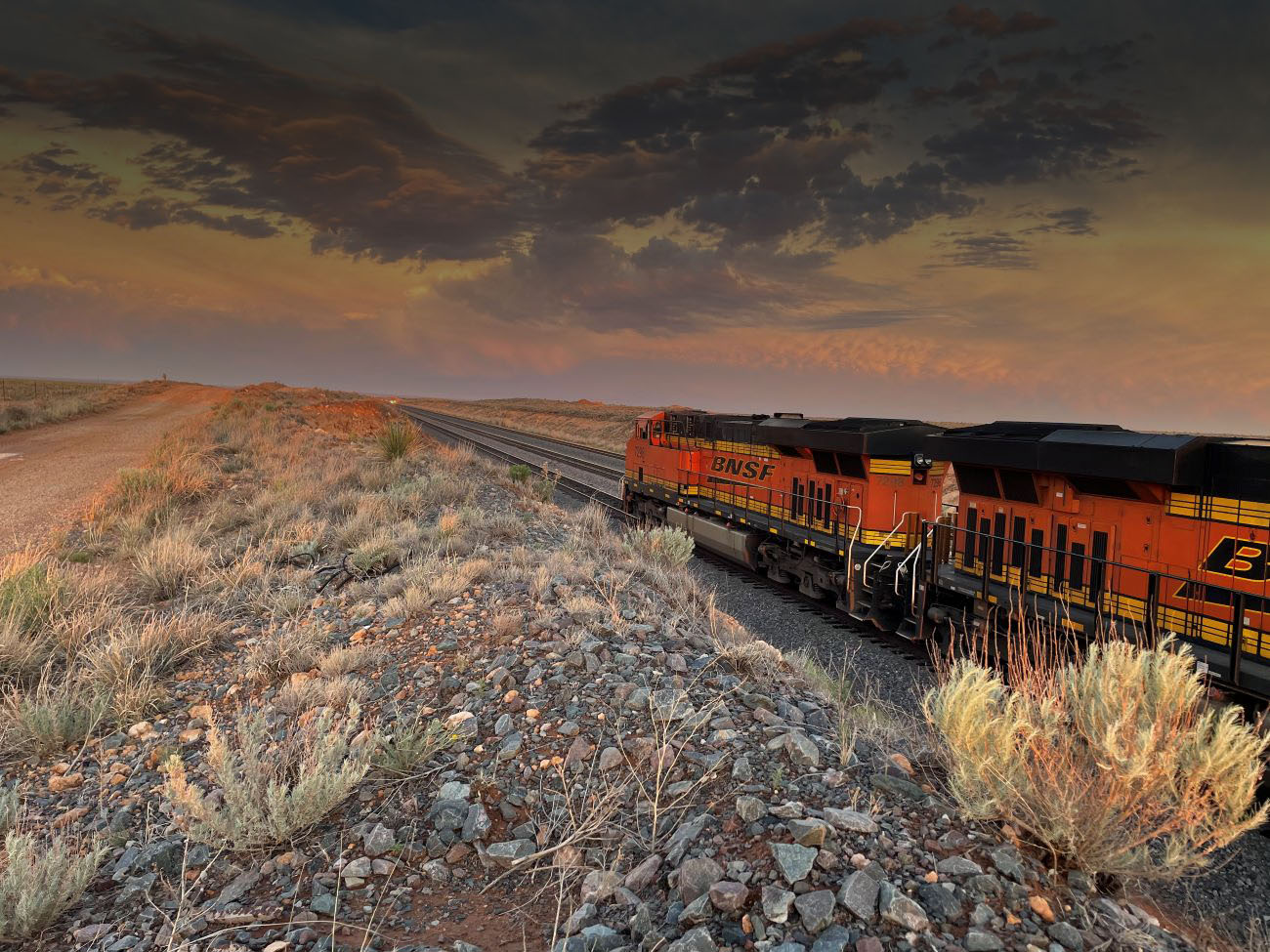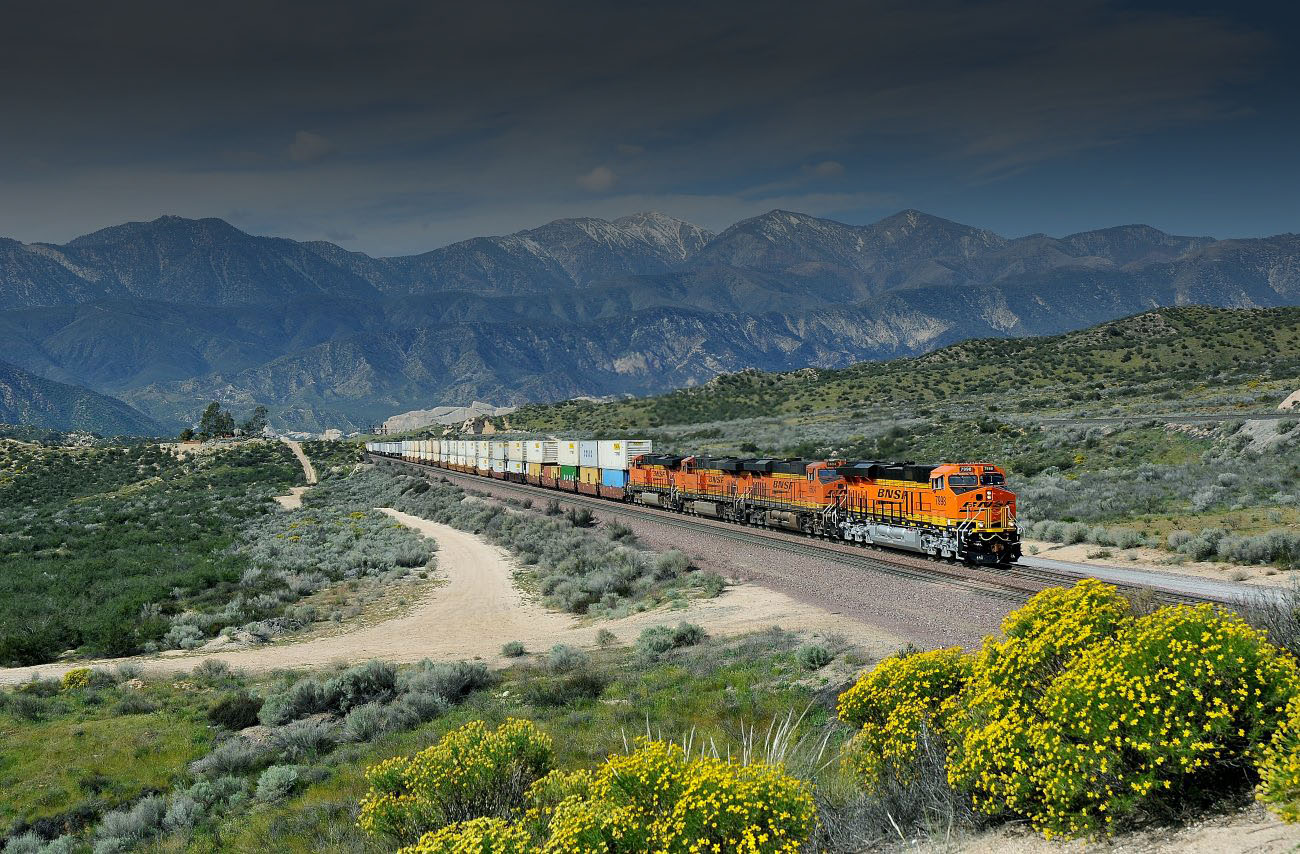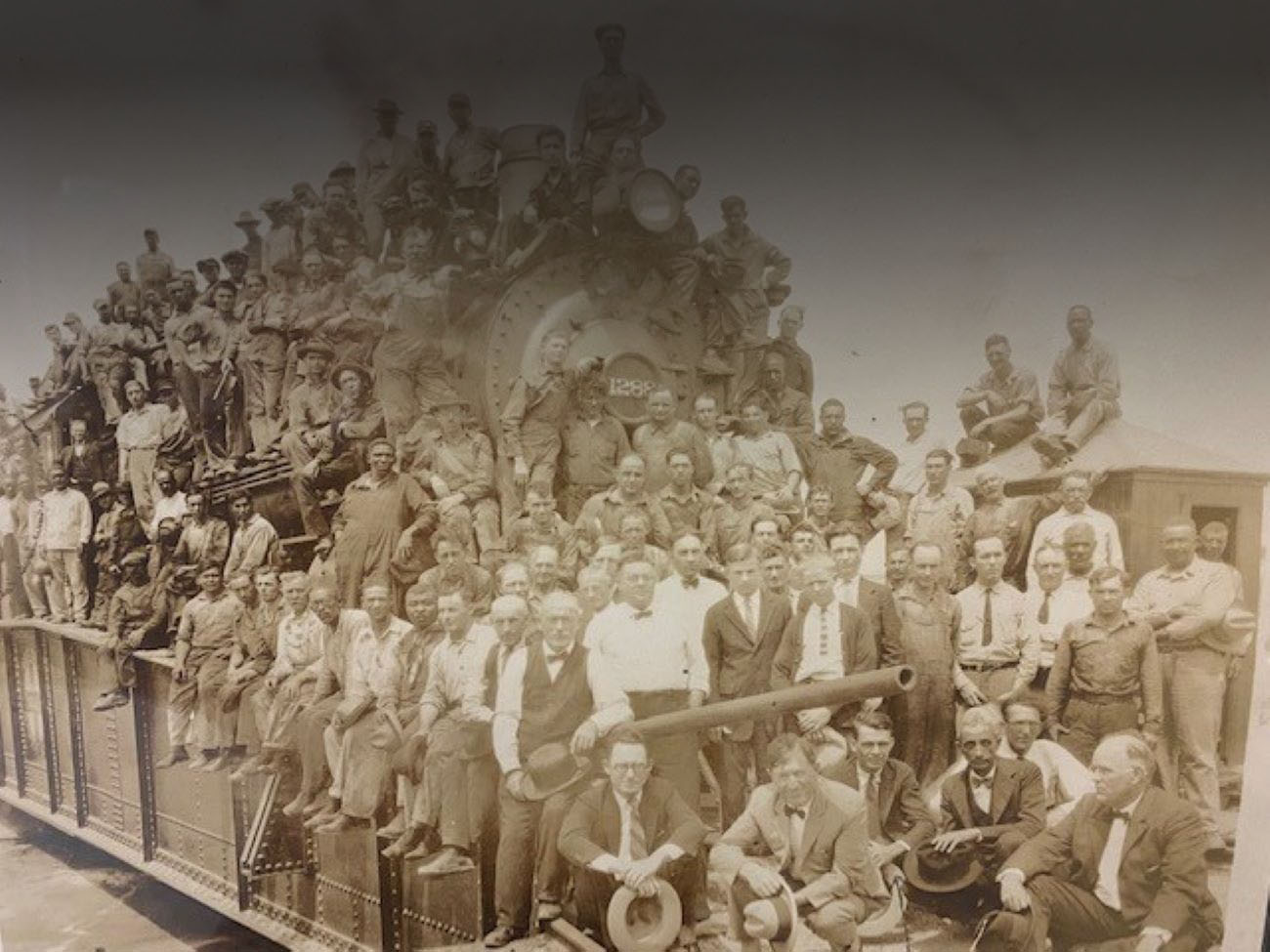San Bernardino central to California’s Inland Empire
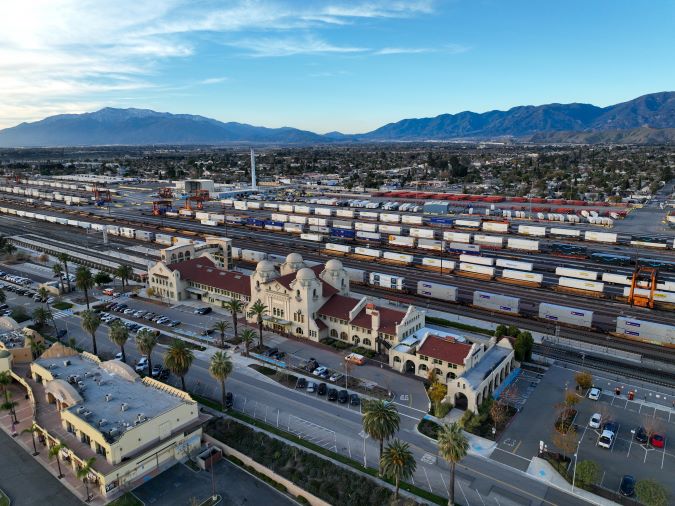
“Orange” you glad we’re in San Bernardino, California? We sure are! This city sits on the southern slope of the San Bernardino Mountains near the region’s famous orange groves. With the arrival of BNSF predecessor, the Atchison, Topeka & Santa Fe Railway (Santa Fe), which gained access via its forerunner, the California Southern Railroad, the city blossomed into a trade center starting with the transportation of its famous oranges.
By 1882, rail had made its way to surrounding areas but not San Bernardino. For nearly a year, the Southern Pacific Railroad prevented other railroads from entering by strategically blocking crossings and hiring armed guards to keep its hold on the region. Eventually, a court order allowed an “at grade” crossing to be established and the crossing war halted. On Sept. 13, 1883, California Southern’s Engine No. 4 made its way to San Bernardino.
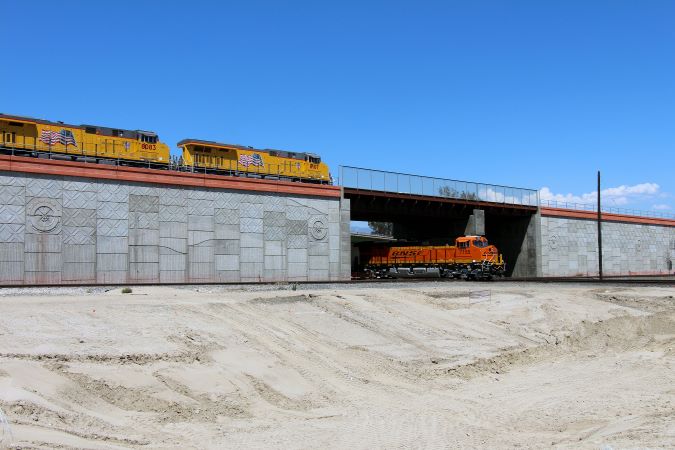
“The arrival of the Santa Fe connected San Bernardino to the rest of the country,” David Snell, manager of the Western Archives for the Santa Fe Railway Historical and Modeling Society and retired BNSF special agent, explained. “The community was so excited by the arrival of rail that they gave land to the Santa Fe to build shops.”
With time, the city grew to be home to the largest Santa Fe locomotive shop west of Topeka, Kansas, with the capacity to accommodate 102 locomotives at a time. The Santa Fe was the economic engine fueling San Bernardino, with over 2,000 people employed in the early 1900s.
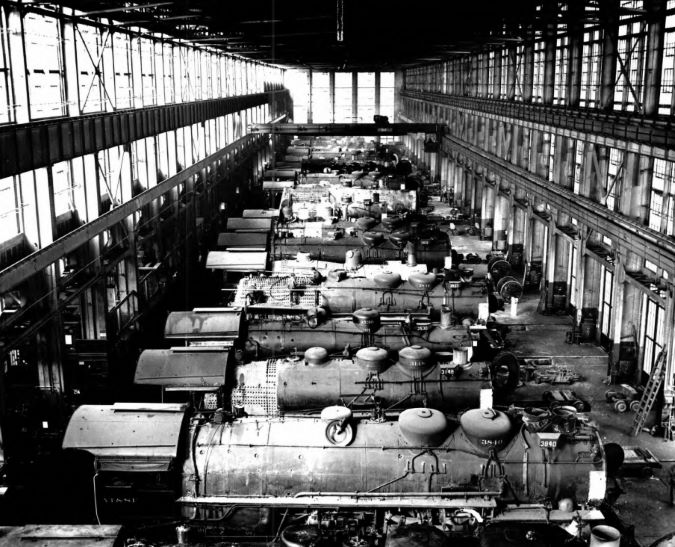
“Since San Bernardino was, and still is, a major point for freight distribution, the terminal had its own power plant,” Fred Hill, president of the San Bernardino Railroad Historical Society, said. “The only thing still standing from the original shops is the power plant smokestack and a whistle. They still blow the whistle every day at noon.”
Rail here was beneficial for local businesses, plus it brought a new mode of transportation as passenger rail was on the rise. To keep up with the increasing popularity and demand to travel by rail, a boxcar was converted as a makeshift train depot as the Santa Fe was constructing a two-story train depot. The first depot was completed in 1886 but was destroyed by a fire in 1916. The depot was rebuilt as a mission-style depot and reopened two years later.
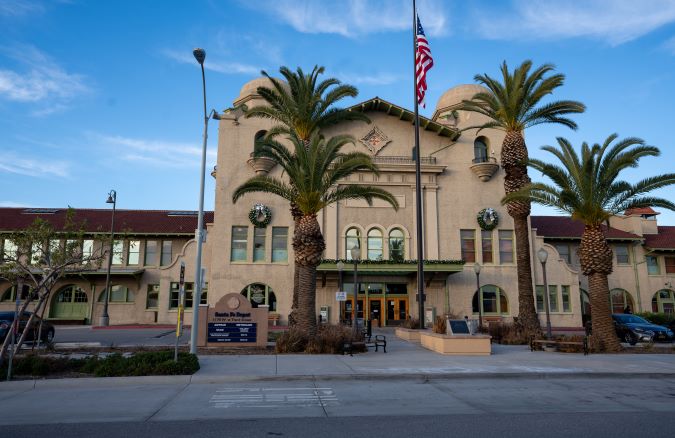
In the 1920s, the San Bernardino depot served as a stop for the Santa Fe’s “Chief” passenger train – which was a luxury streamliner that ran from Los Angeles to Chicago. Post-World War II, the Chief was superseded by the “Super Chief,” which provided a heightened sense of luxury and revived an interest in travelling by rail.
Santa Fe’s San Bernardino facility was also known for its large fleet of steam engines. But like many railroads in the 1950s, the railway’s use of steam engines was discontinued. San Bernardino intervened and asked for one steam locomotive to be salvaged and put on display. That steam locomotive – No. 3751 – became an iconic local landmark.
Though the locomotive was on display, members of the San Bernardino Railroad Historical Society asked if they could cosmetically and mechanically restore 3751 to its former glory. The city allowed the society to purchase the engine for $1 under one condition: to promise the city it would be available every year to be on display for city functions. The society held up its end of the bargain and 3751 operates for special trips and for San Bernardino city events.
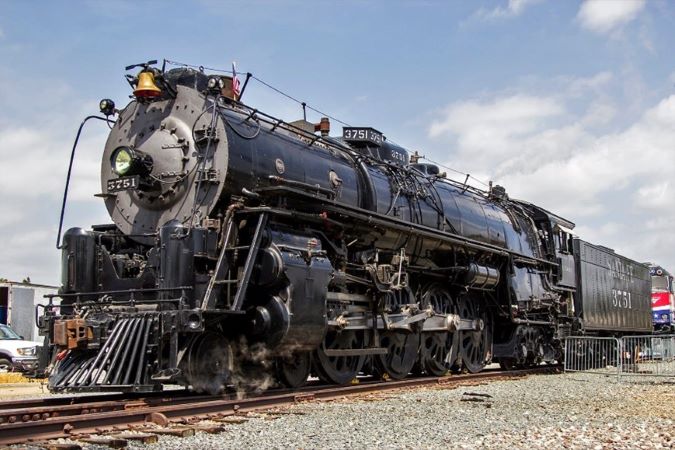
“We learned nearly everything about repairing and operating 3751 from retired Santa Fe mechanics still in the area,” Hill said. “We were able to do this project because they taught us, and we’ll pass this information along to the next generation.”
Today, San Bernardino is home to one of our 27 intermodal facilities. Positioned in the middle of the Inland Empire industrial market, everything from agriculture to merchandise comes here. The trains that pass through San Bernardino every day still play a key role in connecting the West to the rest of the country.
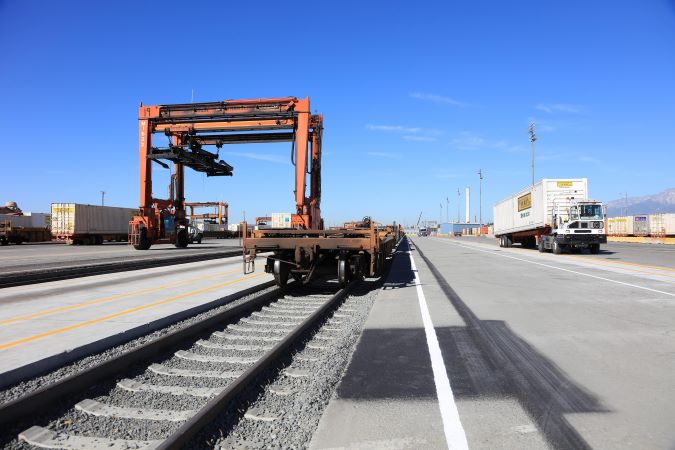
“San Bernardino’s biggest impact to the BNSF network is the Southern Transcon. We provide direct service between San Bernardino and Chicago,” Daniel Martinez, terminal superintendent II, said.
Though traces of a sleepy western town in this Inland Empire remain, growth in the city hasn’t stopped.
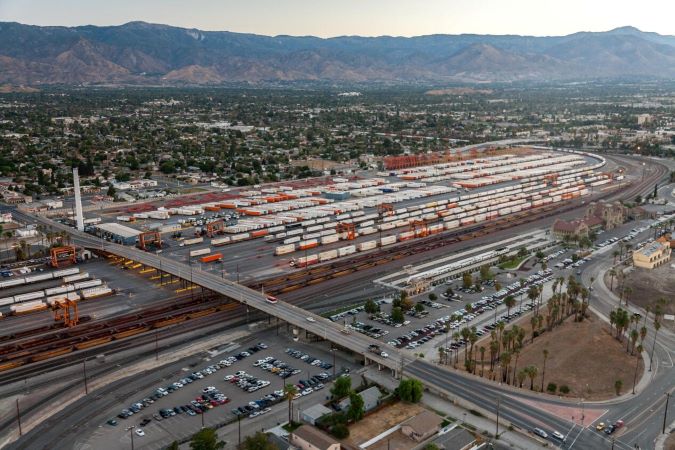
“With 32 years of experience in the San Bernardino area, I’ve watched our facilities grow and adapt with the demands of business across America,” Rich Dennison, general manager, California Division, said. “It’s transformed from a carload location with large facilities, to one of BNSF’s premier intermodal service providers and is a key location for our automotive service. San Bernardino is a living example of our commitment to growth and innovation.”
